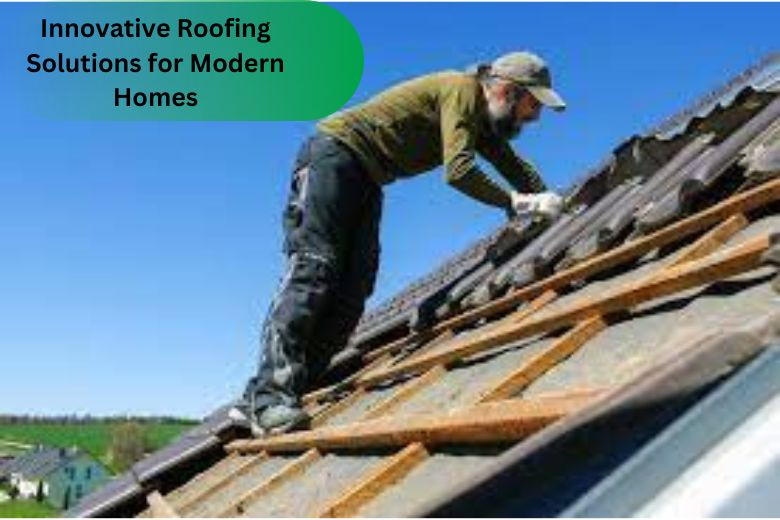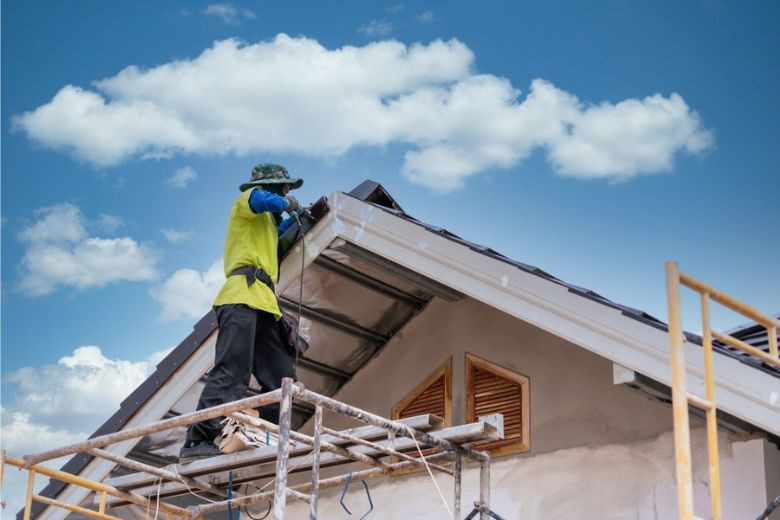Innovative Roofing Solutions for Modern Homes
Posted on August 24, 2024 by Admin

With the ever changing times in the designs of houses and their construction, innovative roofing solutions ensure enhanced functionality, aesthetic value, and energy efficiency in modern homes. Since architectural styles are evolving, with growing concerns toward the environment, interest in roofing solutions that not only look good but are also functionally beneficial is growing. Thus, let's look at some new innovative roofing solutions which might transform the way we look at and use our roofs.
Smart Roof Technologies
Smart roofing technologies are one of the most exciting developments in roofing innovation. Smart roofs use sensors and controls to track and manage a roof's performance against a variety of applications. Some examples are the ones that keep track of temperature and humidity levels within the attic, avoiding mold growth and providing increased energy efficiency. Others include weather-monitoring systems that alert the homeowner in severe weather so that precautions can be taken and maintenance done beforehand.
Solar Roofing
Solar roofing is a classic example of how innovative roofing solutions could be functional and green at the same time. Not like the traditional solar panels that are installed on top of an existing roof, solar roofing has directly integrated photovoltaic cells into roofing materials. This is not only going to preserve the aesthetic appeal of your home; it is also going to maximize energy production. Solar shingles or tiles blend in to give a sleek, modern look while generating electricity from sunlight, off-grid dependency, and reducing energy bills.
Green Roofs
A green roof, living roof, or roof garden is the latest roofing solution, giving a touch of nature even in urban environments. It is covered with vegetation and a medium especially designed for growing. They provide better insulation, have a reduced heat island effect, and deal with stormwater runoff more efficiently. Other than the value of aesthetics and charm added by green roofs to a house, it creates a zone for relaxation and leisure. They are very popular in most modern architecture where sustainable design and eco-friendliness become paramount.

Cool Roofs
Another interesting roofing solution is cool roofs, which were intended to deal with the issue of the absorption of heat. Traditional roofing materials absorb and store heat that eventually increases cooling costs and adds to the problems of the urban heat island effect. In contrast, cool roofs use reflective coatings or special kinds of materials which ensure more sun reflection and less absorption of heat. This helps reduce energy use by decreasing cooling costs and mitigating the negative impact of heat on the environment.
Synthetic Roofing Materials
Synthetic roofing materials give way to new possibilities in roofing solutions that are more durable and versatile. The synthetic slate, shakes, and rubber duplicate traditional materials in outward appearance yet have superior performance characteristics, lightweight, hail and freeze resistant, and with very minimal maintenance in comparison. Synthetic roofing also comes in a variety of colors and styles available for homeowners to get the look that they want without giving up durability.
Energy-Efficient Roof Coatings
Energy-efficient roof coatings are designed to enhance the present performance of roofs through increased reflectivity and insulation. These coatings can be applied on roofing materials like metal, asphalt, and flat roofs. They reduce the amount of heat absorbed and extend a roof's life, hence reducing energy bills associated with air conditioning. As an innovative roofing solution, energy-efficient coatings are excellent for enhancing your current roofing system.
Must Read : How to Spot and Fix Common Roof Ventilation Issues
Conclusion
With innovative roofing solutions, today's modern home design landscape is being changed drastically; its doors open to many options that can now combine aesthetic purposes with functionality. Be it smart roof technologies, solar roofing, green roofs, cool roofs, synthetic materials, or energy efficient coatings, there is something to everyone's taste. Using this kind of roofing innovation will make your house more efficient, sustainable, and stylish, which will impact the surrounding area positively and contribute to the betterment of the entire world.
Faqs
-
1. What are innovative roofing solutions?
Innovative roofing solutions describe new, high performance roofing technologies and materials that help enhance both the performance and aesthetic appeal of a modern home while also being energy efficient. Examples include smart roofs, solar roofing, green roofs, cool roofs, synthetic materials, and energy efficient coatings.
-
2. How do smart roofs work?
These smart roofs are equipped with sensors and control systems to monitor and control their temperatures against humidity and weather conditions. Basically, the technology avoids damage and helps in issuing timely warnings against severe weather, thereby achieving energy efficiency.
-
3. What are the benefits of solar roofing?
Solar roofing works by embedding photovoltaic cells right into roofing materials, generating electricity from the sun. The benefits are lowered energy bills, less dependence on the grid, and a sleek, modern look that retains the aesthetic appeal of a house.
-
4. What is a green roof and its advantages?
A green roof is covered with vegetation and a growing medium, providing advantages such as improved insulation, reduction in heat island effects, better stormwater management, and improvement in aesthetic value and space for relaxation.
-
5. How do cool roofs improve energy efficiency?
It involves applying the cool roof strategies by incorporating reflective coatings or materials onto the roofing to assure additional sunlight reflectance and minimize heat absorption. This practice reduces cooling costs, minimizes energy consumption, and helps lessen the heat island effect in urban areas, ultimately making a home more energy-efficient.
Recent Post
- Top Plumbing Service Providers in Arizona, USA
- Top 10 Electrician Service Providers in Alabama, USA
- Top 20 Roof Repair Service Providers in Alabama, USA
- The Role of Roof Insulation in Energy Efficiency: Tips and Tricks
- Understanding Roof Damage from Wildlife and How to Prevent It
- How to Choose the Best Roofing Contractor for Emergency Repairs
- Roofing Maintenance for Historic Homes: Preserving Architectural Integrity
- The Importance of Proper Attic Ventilation for Roof Health
- How to Identify and Prevent Roof Mold and Mildew
- The Best Practices for Removing Snow from Your Roof